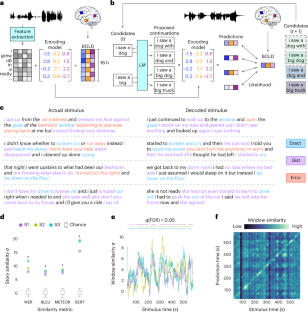2023-05-01 ペンシルベニア州立大学(PennState)
science誌に掲載されたこの研究によると、液液相分離という物理的プロセスが、有益な細菌Bacteroides thetaiotaomicronの生存と腸内定着に不可欠であることが明らかになりました。
今後、このプロセスを調節することで、腸内の微生物叢の編成を変更し、腸内疾患の治療法の開発につながる可能性があります。
<関連情報>
- https://www.psu.edu/news/research/story/essential-mechanism-bacterial-gut-colonization-discovered/
- https://www.science.org/doi/10.1126/science.abn7229
哺乳類の腸内で細菌がフィットネスに必要な相分離を起こす Bacteria require phase separation for fitness in the mammalian gut
Emilia Krypotou,Guy E. Townsend II,Xiaohui Gao,Shoichi Tachiyama,Jun Liu,Nick D. Pokorzynski,Andrew L. Goodman and Eduardo A. Groisman
Science Published:16 Mar 2023
DOI:https://doi.org/10.1126/science.abn7229
Going through a phase
The gut microbiota is critical for human health. Understanding how beneficial bacteria colonize the gut enables medical interventions that promote gut health. Krypotou et al. discovered a mechanism that enhances the fitness of a commensal bacterium in the gut. Bacteroides thetaiotaomicron responded to nutrient limitation and the mammalian gut environment by sequestering a transcription factor within a membraneless compartment. This molecular condensation increased transcription factor activity and modified the transcription of hundreds of genes, including several promoting gut fitness. Thus, commensal bacteria can exploit protein condensation to colonize mammalian hosts. —SMH
Structured Abstract
INTRODUCTION
Gut bacteria play a critical role in human health. Ongoing clinical trials aim to manipulate the gut microbiota to tackle various diseases. However, there is limited knowledge about the factors and mechanisms that render beneficial bacteria successful gut colonizers. The commensal bacterium Bacteroides thetaiotaomicron is one of the most abundant bacterial species in the human gut and is typically found in lean and healthy individuals.
RATIONALE
Cells respond to environmental signals by altering gene transcription. In gram-negative bacteria, transcription termination factor Rho is an essential RNA helicase that terminates transcription at the end of genes and operons and in the leader region of mRNAs when implementing regulatory decisions. The B. thetaiotaomicron Rho protein is unusual as it harbors a large, intrinsically disordered domain (IDR) absent from Rho proteins in extensively studied bacteria such as Escherichia coli and Salmonella enterica. Our research has now revealed how the IDR impacts Rho function and B. thetaiotaomicron’s ability to successfully colonize the gut.
RESULTS
We engineered a B. thetaiotaomicron strain lacking the Rho IDR and determined that it is viable in laboratory media but readily outcompeted in the gut of germ-free mice by the wild-type (WT) Rho-expressing parental strain. Notably, the ΔIDR strain was also outcompeted by the WT strain in ex–germ-free mice harboring a complex bacterial community of 13 species representing the main phyla in the human gut. These results now establish that Rho requires the IDR for fitness in the mammalian gut.
IDRs are often found in RNA-binding proteins and can drive the formation of membraneless compartments through liquid-liquid phase separation. WT Rho formed droplets in vitro depending on the salt and protein concentrations and presence of RNA, whereas the ΔIDR Rho did not, even at protein concentrations 20 times higher. Like WT Rho, the purified IDR also formed droplets in vitro, but unlike WT Rho, did so only in the presence of RNA. Immunofluorescence experiments identified Rho condensates in WT B. thetaiotaomicron facing carbon starvation or harvested from the murine cecum. By contrast, ΔIDR Rho was evenly distributed throughout the bacterial cytoplasm under all tested conditions in the ΔIDR strain. Hence, Rho phase separates in vitro and in vivo in an IDR–dependent manner.
To establish the role that the Rho IDR and phase separation play in Rho’s transcription termination activity, we carried out in vitro transcription termination assays using different templates, purified WT Rho and ΔIDR Rho, and both phase-separating and non–phase-separating conditions. In phase-separating conditions, WT Rho terminated transcription more efficiently than ΔIDR Rho. By contrast, WT Rho and ΔIDR Rho displayed similar termination efficiency in non–phase-separating conditions. Termination at certain templates occurred only under phase-separating conditions, whereas termination at other templates took place under both conditions. Thus, sequestration of WT Rho into a phase-separated compartment increases Rho’s termination activity and is essential for termination in certain templates.
To establish the role that the Rho IDR plays in gene regulation when B. thetaiotaomicron is in the gut, we performed an RNA-seq analysis of isogenic WT and ΔIDR Rho strains harvested from the murine cecum. This analysis identified hundreds of genes whose expression is IDR-regulated, including several required for fitness in the gut, such as those responsible for acquiring specific vitamins that B. thetaiotaomicron is unable to synthesize and/or specifying proteins that participate in central cellular pathways, such as the biosynthesis of amino acids and small molecules and protein homeostasis.
CONCLUSION
We revealed Rho phase separation as a molecular mechanism used by B. thetaiotaomicron, and potentially other commensal bacteria, to successfully colonize the mammalian gut. By triggering sequestration of Rho molecules within a membraneless compartment, carbon starvation and the murine gut increase Rho termination activity, thereby changing expression of numerous genes. Our results also highlight how a single, acquired domain within a highly conserved protein expanded its properties without changing its core biochemical function and now plays a critical role in the organism’s physiology.
Phase separation of transcription termination factor Rho in commensal bacterium B. thetaiotaomicron governs gene expression and promotes bacterial fitness in the mammalian gut.
Nutrient starvation triggers phase separation of a subset of Rho molecules into a membraneless compartment. The sequestration of Rho molecules into a membraneless compartment increases Rho transcription termination activity, modifies the RNA abundance of hundreds of genes, including several required for gut colonization, and promotes bacterial fitness in the gut.
Abstract
Therapeutic manipulation of the gut microbiota holds great potential for human health. The mechanisms bacteria use to colonize the gut therefore present valuable targets for clinical intervention. We now report that bacteria use phase separation to enhance fitness in the mammalian gut. We establish that the intrinsically disordered region (IDR) of the broadly and highly conserved transcription termination factor Rho is necessary and sufficient for phase separation in vivo and in vitro in the human commensal Bacteroides thetaiotaomicron. Phase separation increases transcription termination by Rho in an IDR-dependent manner. Moreover, the IDR is critical for gene regulation in the gut. Our findings expose phase separation as vital for host-commensal bacteria interactions and relevant for novel clinical applications.



